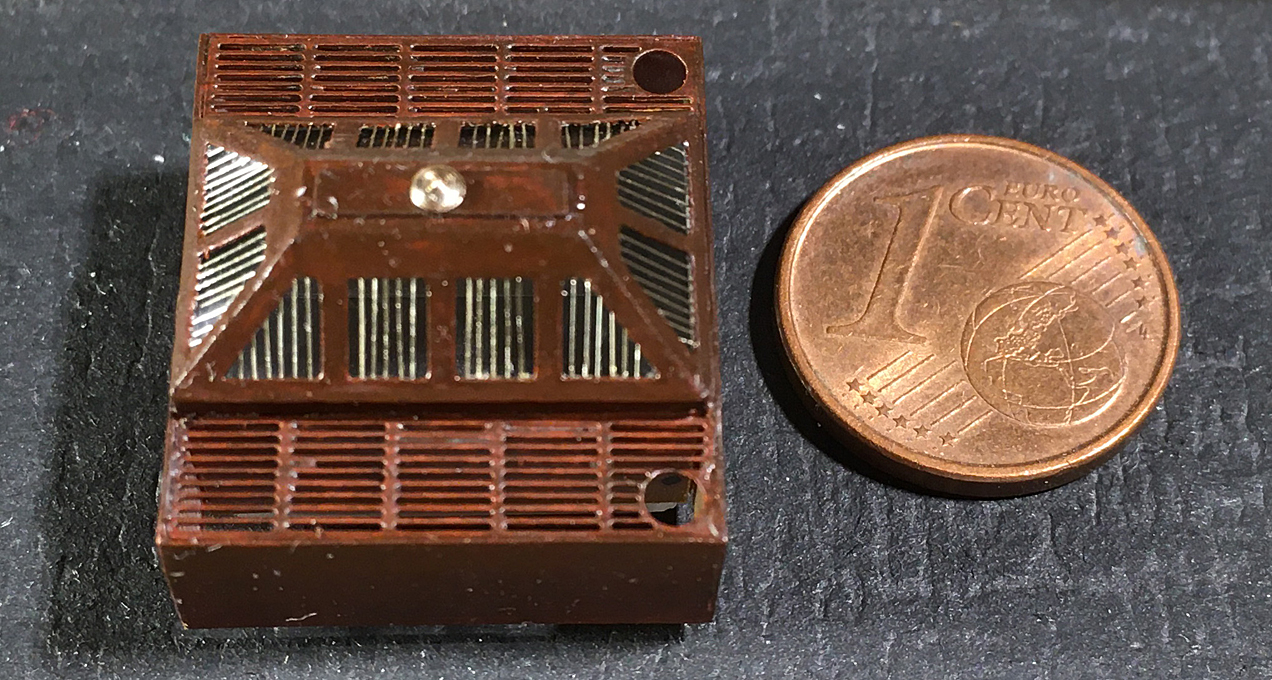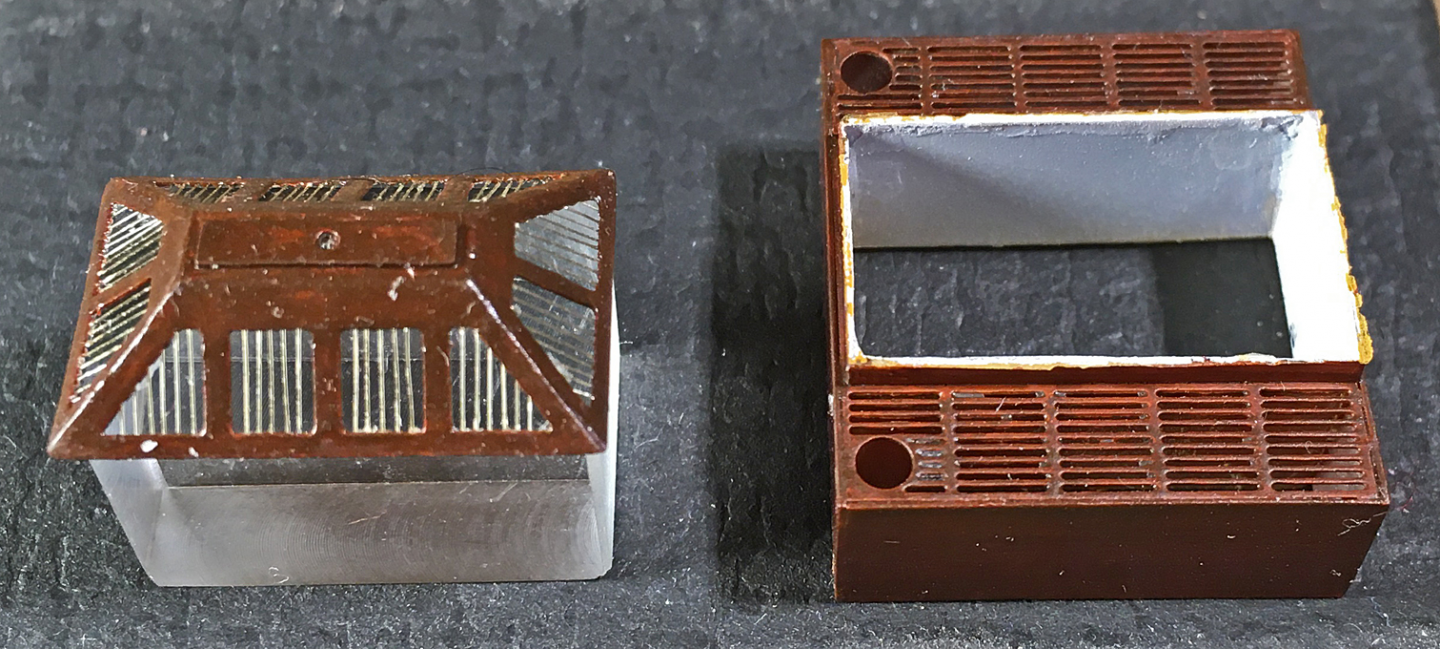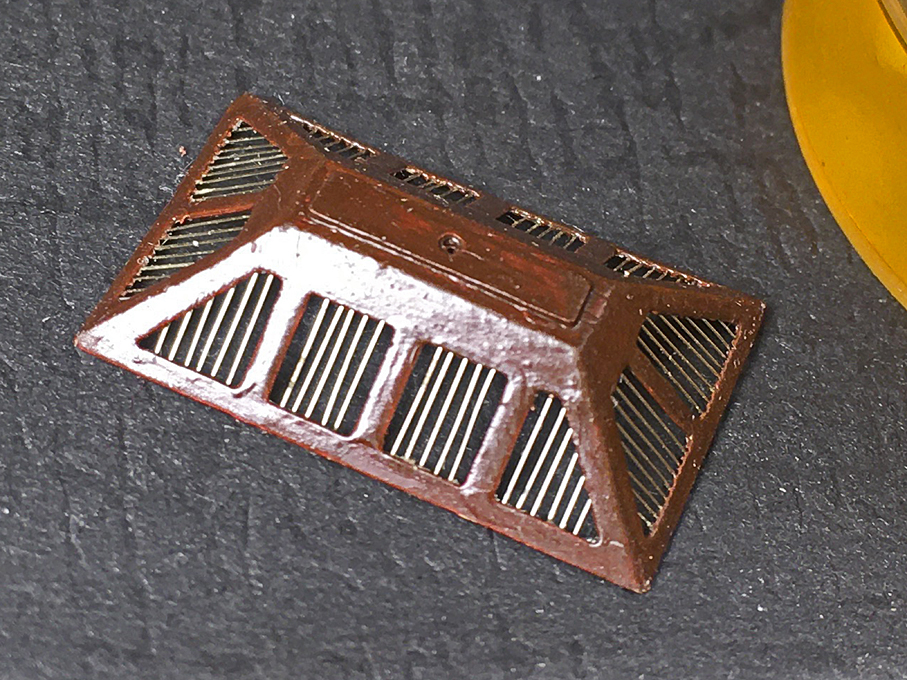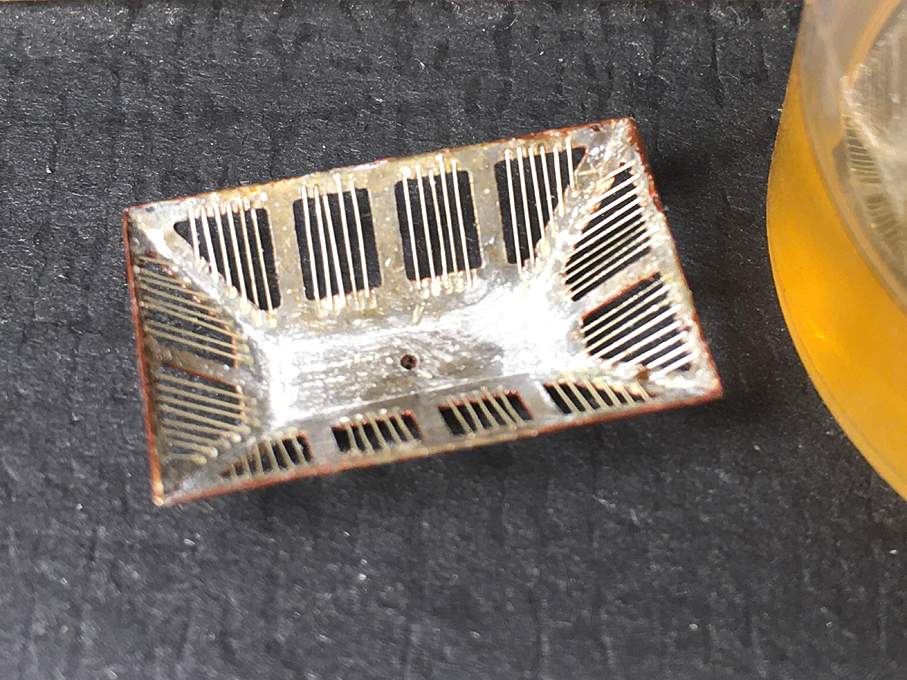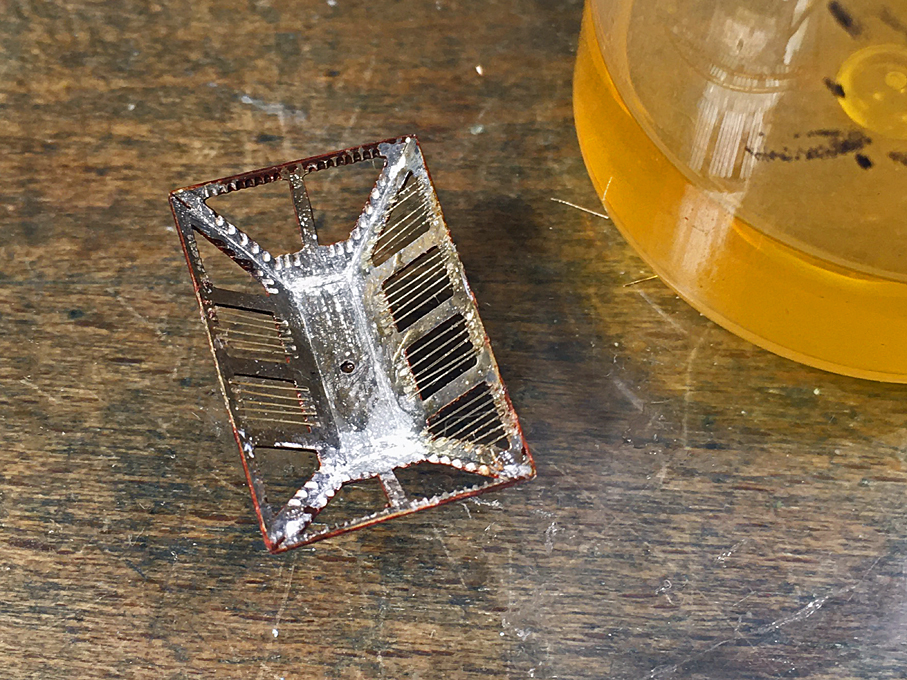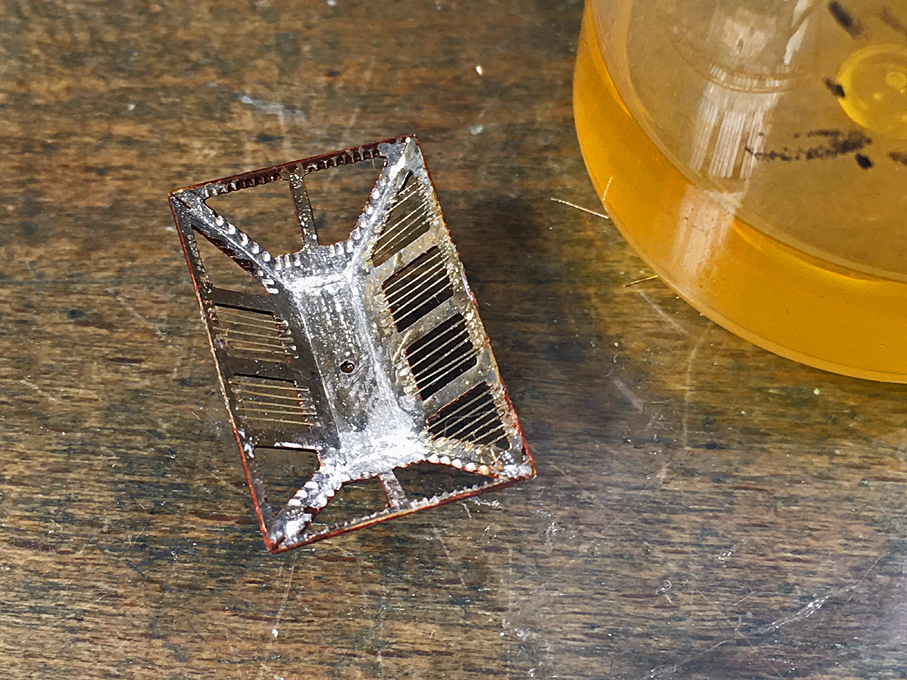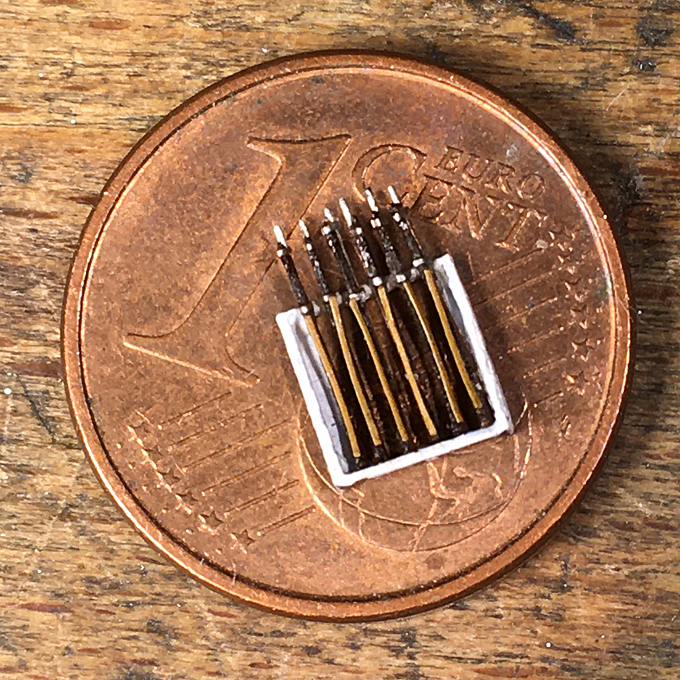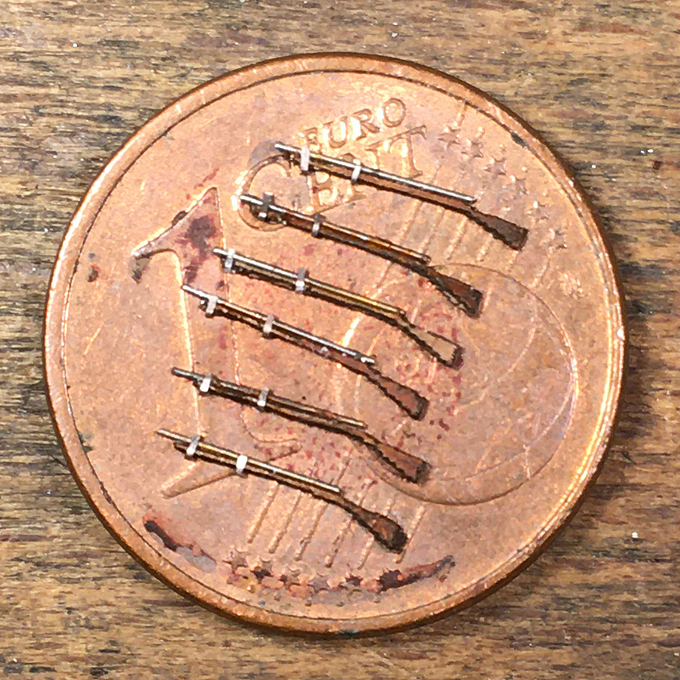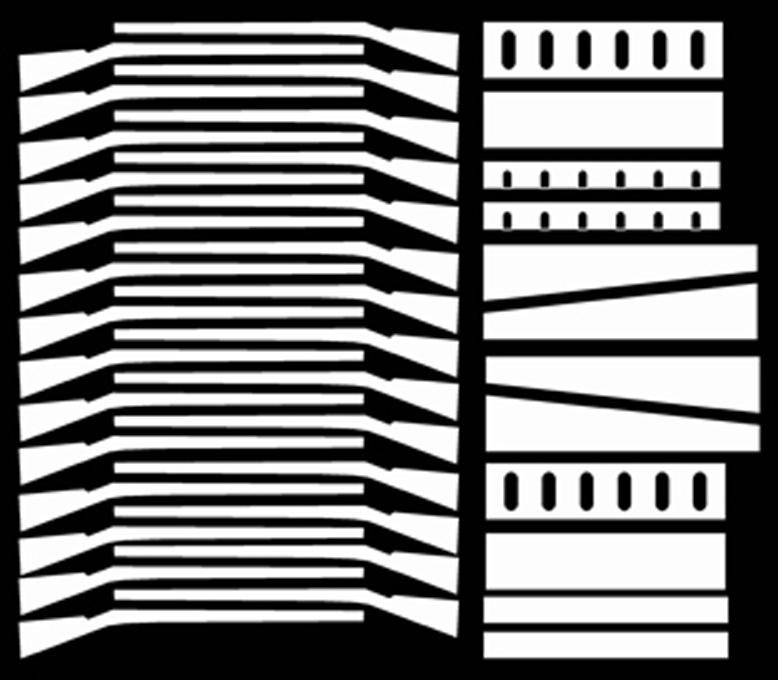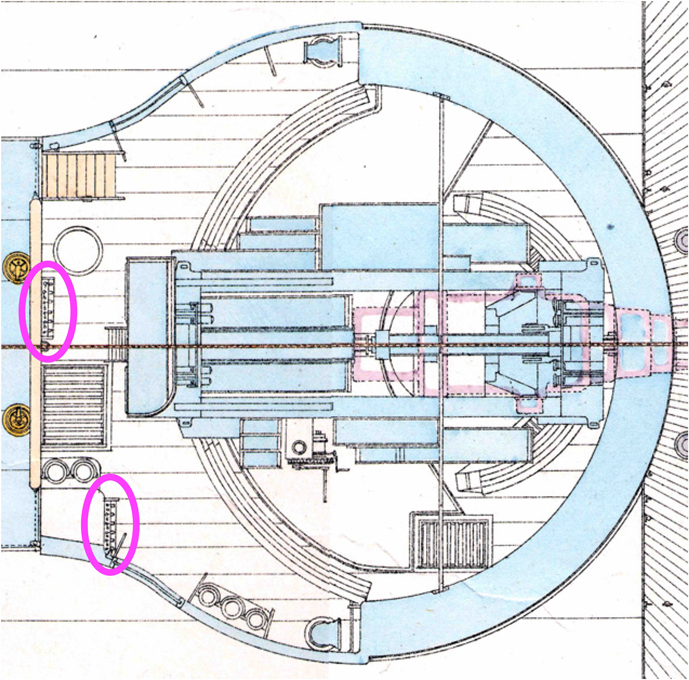-
Posts
6,543 -
Joined
-
Last visited
Content Type
Profiles
Forums
Gallery
Events
Everything posted by wefalck
-
That applies even more so to cars and motorcycles ... 😈 Another good principle is to make yourself always aware of the potential trajectories of workpieces or tool-parts coming off a machine and keep your body and mainly your face out of the way, if possible ... or use safety-shields. When using a lathe, try to opt for collets, rather than 3- or 4-jaw-chucks whenever possible - they are inherently safer. A worthwile investment, as they also have less run-out.
-
Acrylic paint retains a slightly rubbery consistency for a long time. This is due to the time it takes for the water to diffuse out of the interlocking mat of acrylic molecules. It may not be possible to sand for weeks, depending on the thickness of the paint layer. For the same reason, acrylic paint will initially not adhere that strongly to most surfaces and can be easily peeled off. Building up the paint from very lightly sprayed layer accelerates the overall process. Rather than using paper and perhaps even a sanding block, I would use very fine steel-wool (say 0000). Another possibility is pumice applied with a humid paper towel. However, as others have asked, why would you want to sand the paint at all ? If there are specks of dust or other imperfections, the above methods will help.
-
Well, you should actually be happy that the caulked seams are shallow and that the wooden plugs are barely visible: On the real thing, the caulked seams may be a couple of millimeters deep in dry weather and may protrude a couple of millimeters, when the planks are really wet. On average the seams are flush with the deck and that's how people wanted it. The bolts or nails with which the planks are fastened to the beams are sunk in and the holes are plugged with wooden discs cut from the same wood as used for the planks and cut perpendicular to the grain - the objetive was to make them as little visible as possible. They are also inserted with the grain in the same direction as the planks, so that they expand and shrink in unison with the planks. So, less is more On modern ships, the planks would be caulked with 'oakum' and the seams filled up to deck level with molten bitumen, which then would be scraped clean to the deck. So you would have a black seam of about 1 cm width, which translates to 0.03 mm in 1/350 scale ... My painting technique is to spray-paint say in Vallejo 'wood', perhaps run a sharp engraver's chisel along the seams once the paint is dry, remove the fuzz lightly with very fine steel-wool, and then run a 0.1 mm permanent felt-tip pen along the seams, wiping off the excess immediately. In the next round, random planks are picked out with a brush-washing of the base colour to which a tiny amount of white has been added. The procedure is repeated with another set of random planks, adding a tad more white. Depending on your patience, you can do this several times, varying the base-colour just by a tiny shade.
-

Trying to understand white balance
wefalck replied to Gaetan Bordeleau's topic in Photographing your work. How to do this.
Many cameras and mobile phones have either an infra-red or a Bluetooth connection, allowing to 'fire' them without touching them. The respective remote controls can be bought on ebay for a few Euros/Dollars/etc. My came together with a 'selfie-stick', which I hasten to add, I bought because it converts into a light tripod for the mobile phone. -
In most, but the very largest scales, the pattern of the real wood grain is way over-scale or not of the right sort. Also imitating the correct colour using dyes or stains tends to be a hit and miss action ... Coming along nicely the model with all those meticuolous details! It's beginning to look like one of those models they used to have in the windows of travel agencies and that you now find in transport museums.
-
It gives me the shudders when I see guys on YouTube proudly showing off their wood-working or mechanic's skill - wearing gloves to protect their manicure(?) ... gives bad examples to innocent novices, who go there for instruction. Such videos should be banned. That applies also to those thin nitrile gloves a lot of workers nowadays seem to use to avoid skin contact with oils and other chemicals. They may not be strong enough to wind around rotating machinery, but it is enough for the fingers to be pulled close to some sharp rotating tool. BTW, I am running all my machinery off momentary foot-switches - it is enough to lift your foot to cut the power, no looking with injured fingers for emergeny switches in a panic. Apart from minor scratches I never had an accident in the modelling workshop The only serious DIY accident I ever had was a few year ago, when I tried to cut a heavy floor tile. I grooved it with the angle-grinder, but not deep enough. When I then put it on edge to break it off, it broke in an irregular fashion, I must have slipped or something, and a racer-sharp edge went into my left wrist, missing the main artery by a few millimeters - still bleeding like slaughered pig. I put pressure on the clean cut and went inside the house for help. My wife panicked, but had the good sense to suggest using a ladies' pad as a pressure dressing. I bandaged myself up and then we went in search of an emergency department (it was in Spain). The first one turned us away, because our address did not belong to their district 😲 In the second one, the doctor looked at my wrist and asked what we wanted, as I was already bandaged up - it took a while to convince her that the wound needed 'proper' dressing by a professional, perhaps even stitching as a big flap of skin was cut loose ...
-
Pat, I didn't yet respond to your comment above - I have somewhat mixed feelings about photo-etched parts, not so much because of the technique as such, not at all, but often it is used to create lots of detail, but does not represent the details very well as they really look(ed) like. The protective bars were round brass rods, set into the wooden frame of the skylight, which is why I have represented with round wire ... In the next post I will show another skylight, where the grille was place on top of the wooden skylight and this turned out to be too flimsy at this scale to fabricate from wire, so I resorted to etching from 0.1 mm nickel-silver (my supplier didn't offer 0.1 mm brass and nickel-silver is stiffer than brass). Unfortunately, that meant that I had to paint it to make look like brass.
-
Didn't know that B&D made a table-top version of the Workmate, looks useful. I had the fullsize one for decades.
-
As the ends are not visible, I was not concerned about the cut, so I just cut it with a square scalpel blade on a thick sheet of glass. The wire was first stretched to straighten and harden it a bit. To straighten bent pieces, I roll them between two smooth and flat pieces of hardwood.
-
Yes, milling with a carbide cutter, could have been an option, but on the sloping faces I needed many different lengths ... For a future project this could be an option, making a bundle using shellac and then holding it in a collet to mill to length. Still, cutting the wires in the first place is a pain - they are really tough, even the thinnest ones. I bought them for rails and such stuff, but they are very difficult to work with.
-
Keith, these wires are nearly ten times the size I needed ************************************************* Completing the skylights 1 The basic structures of the skylights had been produced a long time ago, but completion was delayed until the painting stage and just before fitting onto the model, as many of the details are very delicate and could be easily damaged during storage. The large engine-room skylight had been constructed from etched brass and bakelite paper parts over a Plexiglas plug milled from the solid. After the different parts had been painted it remained to insert the brass protecting bars. For these, notches had been etched into the underside of the frames to ensure the equidistant positioning of the bars. The bars were cut from 0.1 mm brass-plated copper wire. A diameter of 0.1 mm is equivalent to 16 mm in reality, which is probably too heavy for such bars, but this was the thinnest brass-coloured wire I could find. I have also dark-brass coloured molybdenum in smaller diameters, but it proofed too difficult to cut to exact dimensions in such short lengths due to its hardness. The etched fret for the engine-room skylight The wires were cemented using shellac. To this end I made myself a solution of shellac in alcohol with a consistency of thick honey. This solution is very tacky and stays so for an hour or so – plenty of time to position the short lengths of wire and enough time to cut new ones, if they should jump off your tweezers. A drop of alcohol will also redissolve the shellac should further adjustments be needed. The process of cementing the protective bars with shellac Installation of the bars complete Outside view of skylight cap The skylight received a base-coat of Prince August ‘wood’, followed by a wash of ‘transparent mahogany’. To give this mahogany simulation some ‘depth’ a couple of coats of Vallejo ‘satin varnish’ were added before the bars were installed. Finally, the frame, the Plexiglas plug and the skylight cap were assembled. A small turned brass button was added to simulate the vent – the actual look is conjectural, as it is barely visible only on the very first photograph that was taken of SMS WESPE. The skylight cap fitted to the Plexiglas-plug The two holes in the grille will eventually receive two cowl-vents, but these will be installed later in the process, as their handles are very flimsy. The assembled engine room skylight (I have to take some pictures in diffuse light with the DSLR – these iPhone close-up snaps under the bench-light emphasise all the imperfections …) To be continued ....
-
Nice job on the cleats ! How will they be attached, with brass pins ?
- 153 replies
-
- Ancre
- Bruno Orsel
-
(and 2 more)
Tagged with:
-

SMS Karlsruhe by Wreck1919 - 1/100
wefalck replied to Wreck1919's topic in - Build logs for subjects built 1901 - Present Day
Another project that I had missed so far, perhaps because it is somewhat outside my 'time-frame' (19th century). Very nice work on the slip-hook. Are the pieces for the shackles etched or stamped ? Talking about the slip-hook: are you sure that it is attached that way to the anchor-chain ? I thought these slip-hooks were used at the end of chain-stoppers (short chains or wire-strops), hooked with the opening part into the anchor-chain, while the other end was shackled to an eyebolt on deck. -
Me too, I somehow missed this project so far ... I have been pondering something along these lines for several years - having been impressed by the phantastic models of early iron-clad battleships, for instance in the Musée de la Marine in Paris (https://www.maritima-et-mechanika.org/maritime/paris/frenchironclads.html), the Museo de Storico Navale in Venice (https://www.maritima-et-mechanika.org/maritime/venezia/museonavalevenezia-1.html), or Museo Naval in Madrid (https://www.maritima-et-mechanika.org/maritime/madrid/madrid.html). Though on the real ship the armour belts would have been painted, on these models the steel is left visible, making a nice contrast with the copper-sheathing (the ships were wood or composite-built) and stem/stern posts and rams in bronze. Steel as a model-building material is discouraged by conservators (see article here on MSW on this subject), due to its susceptibility to rust. A few weeks ago I happened to participate in a restauration seminar of the Musée de la Marine and asked them, how they conserve these iron-clad models. Apparently they treat corrosion with a rust-converter, that is a phosporic acid solution (as you would use on your car), to solidify the rust and turn it black, followed by a coating in 'Renaissance Wax'. Looking forward to more updates here ...
-

Realistic Water
wefalck replied to taylormade's topic in Painting, finishing and weathering products and techniques
As matter of fact, the miniaturis McCaffery describes in his book also, how he carves the seas from a block of wood. This requires, however, to have a big chunck of suitable wood - unless you really work in very small scale. -

Realistic Water
wefalck replied to taylormade's topic in Painting, finishing and weathering products and techniques
Here is a text I wrote some years ago on the topic: https://www.maritima-et-mechanika.org/maritime/tips/makingwaves.html, with links to examples. Using epoxi-resins to imbed plastic models can be dangerous, as the curing reaction is exothermic and can melt down your model ... Personally, I tend to go down the plaster-road (traditional plaster-of-Paris or the modern acrylic-based repair plasters). You can shape it wet and carve it dry. When completely(!) dry, give it a good coat or two in sanding filler to close the pores and you are ready for painting. Wave crests and likes are build from acrylic gel to which one can add 'micro-balloons' for volume. Note that some areas the water may have a glossy appearance, while the surface in other areas is disturbed by gusts of wind. I give the whole surface a good and wet coating of glossy acrylic varnish. The disturbed areas are indicated by stippling on acrylic varnish with stiff bristle-brush. -
Roger, this is indeed another possibility - in principle. I doubt, that say 0.05 mm thick brass or even steel sheet would be stiff enough for the process of photoetching. At least not under artisanal conditions at home. There are photoetched seat-belts for aircraft models that look very good, with buckles and everything.
-
Thanks again, gentlemen, for your kind words ! There are a couple of (semi-)commercial sources of flat wire: it seems that certain guitar strings are wound with flat brass-wire, which could be one source. The other one are NiCr-wires used in various heating devices, which not only use round wires, such as in toasters, but flat ones as well. In Vienna we had a supplier that catered for the repaired trade and had all sorts of such flat wires - they should exist in other parts of the world as well. Apart from rolling with a steel bar on a flat, hard surface, short lengths of a defined thickness I can also produce with my horological jewelling press (that I got cheaply of ebay, because no tools came with it), for which I made custom anvils.
-
Probably true, but the Navy handled things differently from the Army. It seems that only the side-arms have been personal weapons.
-
Thanks for the kind words, gentlement ! Roger, the rifles were not kept in the barbette for storage, but only when 'battle ready'. There is a storage area in the rear of the deck-house, away from the seamen's quarters for a total of 36 rifles. So basically every crew-member could be issued with a rifle. I don't know, whether the seamen were issued 'personal' rifles in the Kaiserliche Marine, or whether the rifles were assigned to the ship. One thing I wondered though was, whether the rifles were supplied with (leather) muzzle covers. So far I have not found any information on this. Certain cleaning and maintenance utensils were not issued per rifle, but for groups of rifles - there are old records available on the delivery of the rifles from the factories to the Navy that indicate this.
-
An enigmatic feature in the barbette On the plan view of the original drawings from the mid-1880s two enigmatic features appear, but they are not represented in the cross-sections, which could have provided further insight. These featured have puzzled me for a while until I realised that the oval shaped items look like the cross-section of a rifle-butt – we are looking down onto two rifle-racks. This interpretation was confirmed, when I came across a later drawing that showed the same feature, but with an annotation. Enigmatic feature in the barbette Warships at all times were provided with some small arms to fend off boarding-parties, or to form boarding- or landing-parties themselves. According to RECKENDORF (1983) ships of the Imperial German Navy at that time in question were provided with the Jägerbüchse 71 and the appropriate side arm. The Jägerbüchse 71 is a refined version of the Gewehr 71 that was introduced after the Franco-German War 1870/71 to replace the famous ‘Zündnadelgewehr’. Jäger stands for hunter and Büchse for rifle. Compared to the standard infantry weapon Gewehr 71, the Jägerbüchse was more precisely manufactured/inspected and had a finer trigger, as the Jäger-batallions received better gun training and a good proportion recruited from the hunting and forestry professions. Both weapons were still single-loaders, chambered for metal cartridges. In the cited book and on the Internet I found good photographs of the rifle. At 1:160 scale it is only 7.8 mm long, so requires considerable simplification. I drew the stock to be cut from two layers of 0.2 mm thick Canson-paper using the laser-cutter. At the same time, I drew my interpretation of what the rifle-rack might have looked like, as I only had the plan-view. Template for laser-cutting the rifles and the rack The individual parts were laminated/glued together Zapon-varnish and painted using Vallejo acrylics. The rifles were fitted out with barrels from appropriate lengths of 0.2 mm tinned copper-wire. The rings that fix the barrel to the stock are flattened 0.1 mm tinned copper wire. As I still did not get around to build the miniature rolling mill for which I had drawn plans years ago, I flattened the wire by rolling a piece of round steel on a thick glass-plate. Jägerbüchse M71 in 1:160 scale As the tiny rifles are difficult to handle, they were glued into the already assembled rack at this stage using some satin acrylic varnish. Originally, I intended to complete them with trigger-guards made from 0.05 mm wire, but I did not manage to glue down the tiny 0.4 mm diameter rings, so I only added shoulder straps from rolled 0.1 mm wire that was painted in brown leather colour. These were also attached using satin acrylic varnish. Given the amount of work that went into constructing these tiny rifles, I decided to only equip the most visible rack with them. The completed rifle-rack To be continued ... ___________________________ RECKENDORF, H. (1983): Die Handwaffen der königlich preußischen und kaiserlichen Marine.- 172 p., plates, Dortmund (Eigenverlag).
-
What do you mean by 'anodised' steel wire ? Anodisation is normally a process that makes a metal corrosion resistant by kind of electroplating a dense layer of a defined oxide on it. It is mostly used on aluminium. In any case, an oxide layer is exactly what you don't want, when soldering, as you need the metal-metal contact. (Soft)soldering steel is possible, but usually requires a pretty strong acidic flux. So you need to clean the parts in an alkaline solution to neutralise the flux afterwards. Instead of steel, I would rather go for hard brass. Much easier to solder.
About us
Modelshipworld - Advancing Ship Modeling through Research
SSL Secured
Your security is important for us so this Website is SSL-Secured
NRG Mailing Address
Nautical Research Guild
237 South Lincoln Street
Westmont IL, 60559-1917
Model Ship World ® and the MSW logo are Registered Trademarks, and belong to the Nautical Research Guild (United States Patent and Trademark Office: No. 6,929,264 & No. 6,929,274, registered Dec. 20, 2022)
Helpful Links
About the NRG
If you enjoy building ship models that are historically accurate as well as beautiful, then The Nautical Research Guild (NRG) is just right for you.
The Guild is a non-profit educational organization whose mission is to “Advance Ship Modeling Through Research”. We provide support to our members in their efforts to raise the quality of their model ships.
The Nautical Research Guild has published our world-renowned quarterly magazine, The Nautical Research Journal, since 1955. The pages of the Journal are full of articles by accomplished ship modelers who show you how they create those exquisite details on their models, and by maritime historians who show you the correct details to build. The Journal is available in both print and digital editions. Go to the NRG web site (www.thenrg.org) to download a complimentary digital copy of the Journal. The NRG also publishes plan sets, books and compilations of back issues of the Journal and the former Ships in Scale and Model Ship Builder magazines.





